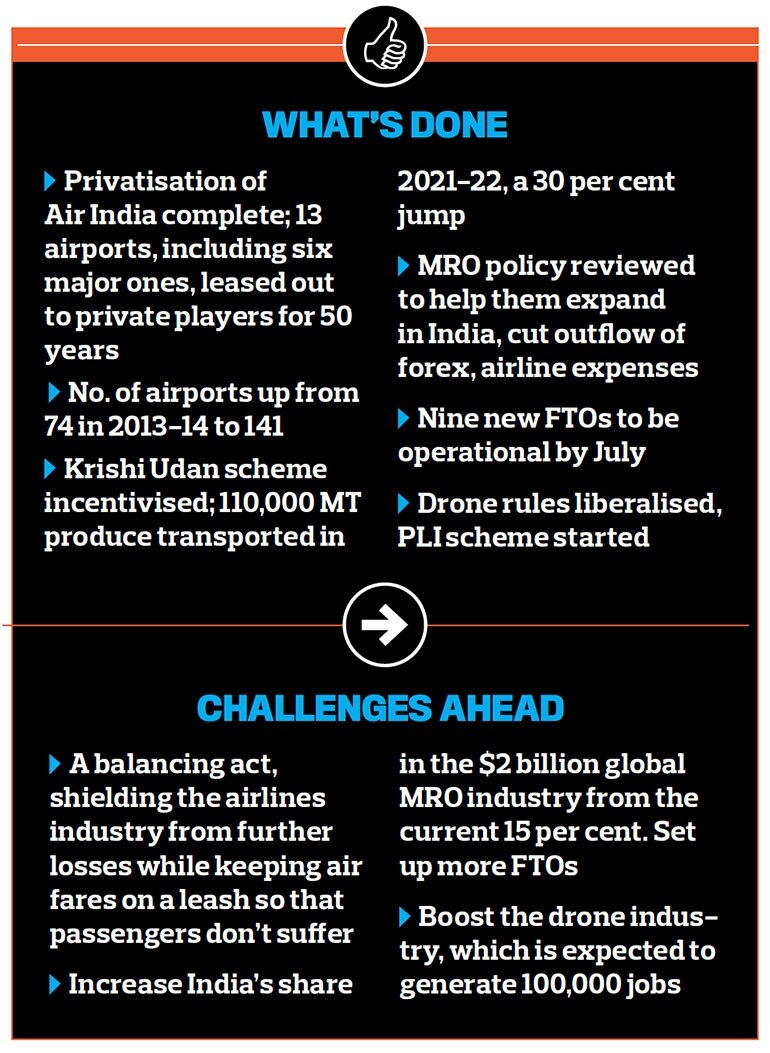Battered by the pandemic, the airlines industry is getting back on its feet, aided by infrastructure and stimulus schemes
(Photo: ANI)
India’s civil aviation sector is among the fastest growing in the world, with domestic traffic accounting for nearly 70 per cent of the total airline traffic in South Asia. But during the two years of the pandemic, airline operators reported losses of over Rs 19,500 crore and airports Rs 5,120 crore. With domestic traffic now returning to pre-Covid levels regular international flights resuming, the aviation sector is expected to bounce back.
A stimulus package is in the works for the industry. Jyotiraditya Scindia, the minister for civil aviation, has convinced 22 states and UTs to drop VAT on ATF to 1-4 per cent. Meanwhile, the Airports Authority of India will spend Rs 30,000 crore in the next 3-4 years to expand capacity of 42 brownfield airports and build three new ones. “The number of airports will go up from 141 to more than 200 by 2025,” says Scindia. The ministry is also focusing on increasing flying training organisations (FTOs) and enhancing facilities for maintenance, repair, and overhaul (MRO) in India. While the UDAN scheme has expanded to connect Tier II and III cities, Krishi Udan has revolutionised the transportation of perishables and agriculture.
